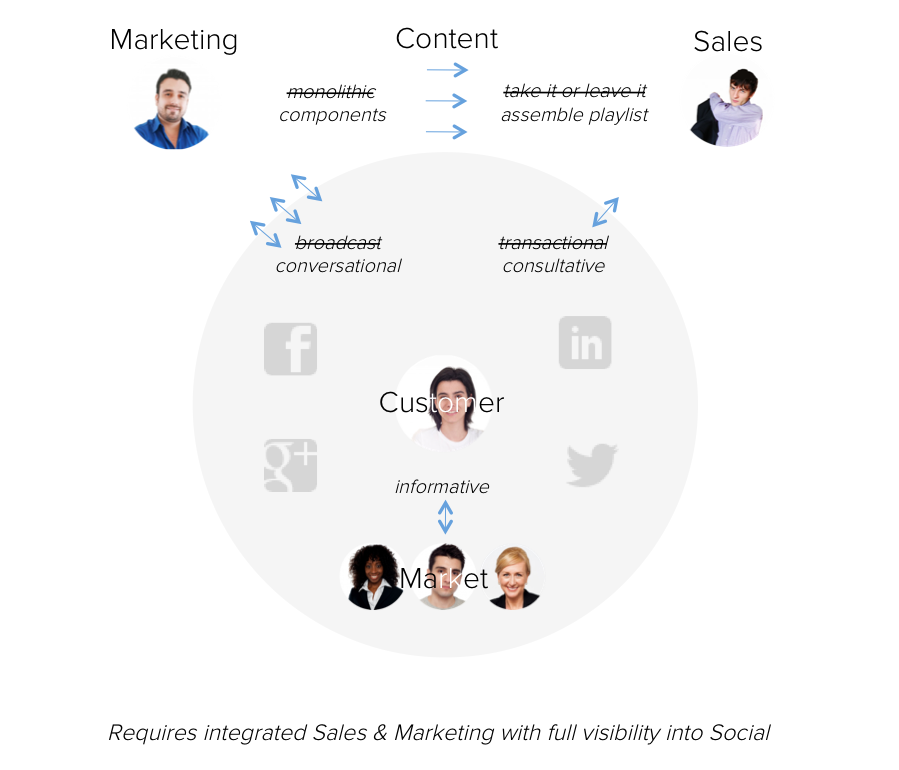Companies increasingly use social media to learn about new opportunities and how to address business issues. People share information and give advice on all manner of things, including your offering and how you compare to competitors. This is why it is important to equip your salesforce with tools for social selling.
Social selling uses social media networks to generate new business. Typically there are three types of social selling; the first uses social media to generate traffic to e-commerce websites where customers can buy products or services.
The second focuses on raising brand awareness via virtual communities – content is designed to influence people’s buying decisions when they are offline – for example when they shop at a store. The third enables marketing and salespeople to interact directly with customers or prospects on social networks.
Adapting to change
The role of the salesperson is changing, as more B2B companies actively use social media. Online networks, such as LinkedIn, Facebook and Twitter, allow businesses to reach a much larger audience and find leads in far-flung places. According to SocialMedia Examiner’s, 2014 Social Media Marketing Industry Report, by spending as little as six hours a week, 66%+ of marketers see lead generation benefits with social media.
Social selling requires a new approach to sales and marketing, as interacting on virtual communities is totally different to face-to-face selling. This is daunting for traditional salespeople – they have to learn new skills and adopt a different mindset!
It is crucial to monitor what your customers, prospects and competitors are talking about on social networks. This will allow your sales team to join conversations about business issues that really matter. It will also help identify the problems your customers have and highlight typical questions from prospects. If they are talking about your industry, it will give salespeople the ideal opportunity to respond.
However, as communication on social media networks is largely done in writing, ideas will need to be communicated clearly and concisely, and be interesting. Given the public nature of virtual communities, companies have to be transparent. Be careful not to blag or exaggerate, as the audience may know as much about your product as you.
It is important to soft-sell – for example, if you are responding to questions about your product in an online forum you should provide factual answers, without beingsalesy or evasive. And if you are joining a conversation about a potential customer’s business issue, you shouldn’t try to sell at all. Salespeople tend to be product oriented and very direct, since they usually interact with qualified prospects. But this is not appropriate on social media networks, where the relationship is much looser. It is not about direct selling, offers or discounts.
By engaging prospects with interesting and helpful content and talking about broader business issues, salespeople can build more natural relationships. They can gain valuable insight into their prospects’ businesses and connect with them early in the buying process. Salespeople can also build their own personal online brands. One of the most effective salespeople I know puts huge effort into nurturing his contact list and in sales situations often reminds hesitant prospects of how well he has always looked after them, across several companies and 15 years of support. By moving this online, a vastly bigger reach and efficiency is obtained.
Curate playlists for specific audiences
A social selling platform can amplify the personality of the individual and give them the confidence to network competently online.To be good at social selling you need to put out relevant and engaging content frequently. While not everyone can be a musician and create music, everyone can compile a playlist. Salespeople don’t have to write great content from scratch – they can select content from a wealth of company resources such as marketing, product specialists, corporate presentations and third party reviews. This way they can compile something that works for a particular audience.
SalesSeek’s content repository and analytics allows individuals to easily curate and publish content to target audiences. It enables you to measure and compare the performance of different content or salespeople in a number of ways. For example, you can send direct emails to specific groups and measure the traffic generated to landing pages on your website. You can also build social profiles of contacts and map customer journeys by tracking every touchpoint. This provides a complete view of conversations as they happen, which is essential for engaging with contacts on a growing number of social channels. And because the platform’s interface is extremely visual, you can quickly see the overall status of your sales and marketing activities.
Create your style
Companies should develop their own approach to social selling, based on the content and strategies that perform well with different audiences and online networks. SalesSeek integrates sales and marketing functions so teams can work together. This means data can be shared, ensures leads are properly followed up and that relationships are nurtured. You can implement business rules to automate marketing material. For example, if a prospect indicates on your website that they are interested in more information, you can automatically send a relevant document to them. Or relationships can be protected, for example, a rule could be not to send a particular document to a prospect if they are mid-conversation with one of the sales team. The problem with existing siloed approaches is that salespeople often get caught on the hop when an inappropriate marketing message gets delivered beyond their control.
Photo Credit: Social JD Hancock / Flickr

